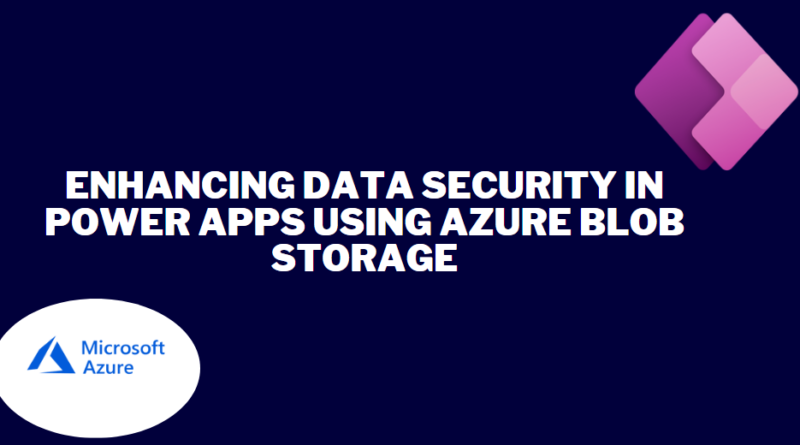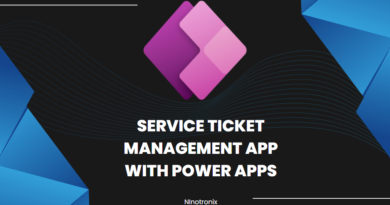Enhancing data security in Power Apps using Azure Blob Storage
Enhancing data security in Power Apps using Azure Blob Storage is crucial to protect sensitive information and ensure the integrity of your application. Here’s a step-by-step guide on how to implement data security measures:
Step 1: Set up Azure Blob Storage with secure configurations Before starting, ensure that you have set up Azure Blob Storage with secure configurations. Enable features such as encryption at rest, role-based access control (RBAC), and secure transfer protocols like HTTPS. These configurations provide a strong foundation for data security.
Step 2: Implement user authentication and authorization In Power Apps, enforce user authentication to ensure that only authorized users can access the application and interact with Azure Blob Storage. Leverage Azure Active Directory (AAD) for user authentication and implement role-based access control (RBAC) to manage user permissions. Assign appropriate roles to users based on their responsibilities and grant access to the necessary resources.
Step 3: Apply data encryption Implement encryption measures within your Power Apps application to protect data in transit and at rest. Utilize HTTPS for secure communication between the app and Azure Blob Storage. Additionally, leverage Azure Blob Storage’s encryption capabilities, such as server-side encryption with customer-managed keys (CMKs) or Azure Key Vault. This ensures that data is encrypted and protected both in storage and during transmission.
Step 4: Enable data loss prevention (DLP) policies Implement data loss prevention policies within Power Apps to prevent the accidental or unauthorized sharing of sensitive information. Configure DLP rules to identify and block the sharing of personally identifiable information (PII) or other sensitive data. This helps mitigate the risk of data breaches or leaks.
Step 5: Implement audit logging and monitoring Enable logging and monitoring mechanisms within your Power Apps application and Azure Blob Storage. Implement Azure Monitor to collect and analyze log data, set up alerts for suspicious activities, and monitor access patterns. This allows you to proactively detect and respond to potential security threats.
Step 6: Implement secure coding practices Follow secure coding practices when developing your Power Apps application. This includes using parameterized queries, validating user input, and implementing input sanitization techniques to prevent common security vulnerabilities like SQL injection or cross-site scripting (XSS). Regularly update and patch the application to address any identified security vulnerabilities.
Step 7: Implement data backups and disaster recovery Ensure that you have proper data backup and disaster recovery mechanisms in place. Regularly back up the data stored in Azure Blob Storage to protect against data loss due to accidental deletion, system failures, or malicious attacks. Implement disaster recovery strategies to quickly recover from any potential incidents.
Step 8: Regularly review and update security measures Periodically review and update your security measures to stay aligned with evolving threats and best practices. Stay informed about security updates and patches for both Power Apps and Azure Blob Storage. Conduct security assessments and penetration testing to identify vulnerabilities and address them promptly.
Step 9: Educate users about data security best practices Educate your Power Apps users about data security best practices to promote a culture of security awareness. Provide guidelines on creating strong passwords, avoiding suspicious links or attachments, and being cautious with sharing sensitive information. Encourage users to report any security concerns or incidents promptly.
Step 10: Conduct regular security audits and assessments Perform regular security audits and assessments to evaluate the effectiveness of your security measures. Engage third-party security experts to conduct independent assessments of your Power Apps application and Azure Blob Storage configuration. This helps identify any gaps or weaknesses in your security posture.
By following these steps, you can enhance data security in Power Apps using Azure Blob Storage and ensure the confidentiality, integrity, and availability of your application and data.



